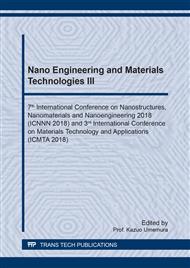p.155
p.160
p.167
p.173
p.178
p.185
p.190
p.195
p.200
Scratch Hardness Properties of Waste Palm Cooking Oil Based Polycaprolactone Urethane Coatings
Abstract:
Polyurethane has been widely used in various coating industries due to its good weathering resistance, promising appearance, excellent elasticity and good mechanical properties. The present work reports the development of polycaprolactone urethane coatings based on waste palm cooking oil (WPCO). WPCO was recycled to synthesis polycaprolactone (PCL) polyol using two-steps methods; transesterification and ring opening polymerization with various ratios of ε-CL to WPCO based polyesteramide. The WPCO based PCL polyols were reacted with isophorone diisocyanate (IPDI) to produce polycaprolactone urethane coatings. FTIR analyses were employed to confirm the formation of polyols and the scratch resistance properties of coatings were characterized by scratch hardness testing. The results revealed that the scratch resistance of polycaprolactone urethane coatings increased by increasing the ε-CL composition in the formulation.
Info:
Periodical:
Pages:
178-182
Citation:
Online since:
March 2019
Authors:
Price:
Сopyright:
© 2019 Trans Tech Publications Ltd. All Rights Reserved
Share:
Citation:


